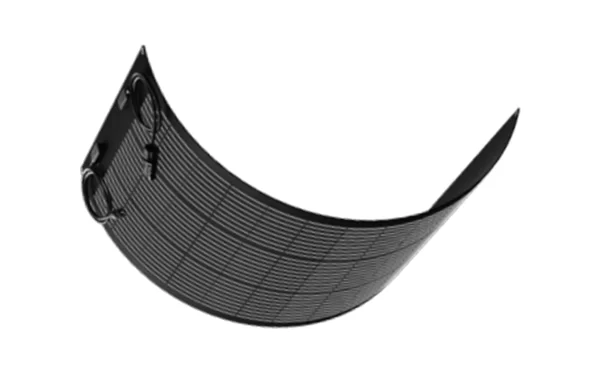Unleashing the Potential of the Flexible Solar Panels Market
In recent years, the flexible solar panels market has been making significant waves in the renewable energy sector. As the world continues to search for sustainable and efficient energy solutions, flexible solar panels are emerging as a game-changer.
The Rise of Flexible Solar Panels
Flexible solar panels, also known as thin-film solar panels, are made from materials such as amorphous silicon, cadmium telluride, or copper indium gallium selenide. These materials allow the panels to be flexible and lightweight, making them ideal for a wide range of applications.
One of the key drivers behind the growth of the flexible solar panels market is the increasing demand for portable and off-grid power solutions. With the rise of outdoor activities, camping, and RV travel, flexible solar panels offer a convenient way to generate electricity on the go. They can be easily attached to tents, backpacks, or vehicle roofs, providing a reliable source of power for lights, electronics, and other devices.
Another factor contributing to the market’s growth is the growing interest in sustainable building practices. Flexible solar panels can be integrated into building facades, roofs, and windows, providing both aesthetic appeal and energy savings. This integration not only reduces the reliance on traditional grid power but also helps to lower carbon emissions and create more sustainable communities.
Advantages of Flexible Solar Panels
Compared to traditional rigid solar panels, flexible solar panels offer several advantages. Firstly, their flexibility allows them to be installed on curved surfaces and irregular shapes, expanding the range of installation options. This makes them suitable for applications such as curved roofs, sailboats, and even wearable devices.
Secondly, flexible solar panels are lightweight and easy to handle, reducing installation costs and labor. They can be transported and installed more easily than rigid panels, making them a popular choice for remote locations and DIY projects.
Thirdly, flexible solar panels have a lower environmental impact. They require less material and energy to produce than rigid panels, and their flexibility allows for more efficient packaging and transportation. Additionally, many flexible solar panels are made from recyclable materials, further reducing their environmental footprint.
Market Trends and Opportunities
The flexible solar panels market is witnessing several trends that are expected to drive its growth in the coming years. One of the trends is the increasing adoption of hybrid solar systems that combine flexible solar panels with energy storage solutions. These systems offer greater energy independence and reliability, making them ideal for off-grid applications and areas with unreliable power grids.
Another trend is the development of new materials and technologies that improve the efficiency and durability of flexible solar panels. For example, researchers are exploring the use of perovskite solar cells, which have the potential to achieve higher efficiencies at a lower cost. Additionally, advancements in encapsulation materials and manufacturing processes are enhancing the durability and lifespan of flexible solar panels.
The market also presents several opportunities for growth. For instance, the growing demand for renewable energy in emerging economies offers a huge potential for the expansion of the flexible solar panels . Governments in these countries are increasingly investing in renewable energy projects and providing incentives for the adoption of solar power, creating a favorable environment for the growth of the market.
Moreover, the increasing popularity of electric vehicles is expected to drive the demand for flexible solar panels for vehicle integration. Solar-powered electric vehicles can extend their driving range and reduce reliance on charging stations, making them more convenient and sustainable.
Challenges and Future Outlook
Despite the many advantages and opportunities, the flexible solar panels market also faces some challenges. One of the main challenges is the relatively high cost compared to traditional rigid solar panels. Although the cost of flexible solar panels has been declining over the years, they still remain more expensive, which can limit their adoption in some applications.
Another challenge is the need for further research and development to improve the efficiency and durability of flexible solar panels. While significant progress has been made in recent years, there is still room for improvement to make flexible solar panels more competitive with traditional solar panels.
Looking ahead, the future of the flexible solar panels market appears promising. As technology continues to advance and costs continue to decline, flexible solar panels are expected to become more widespread and accessible. With their unique advantages and growing applications, flexible solar panels are set to play a crucial role in the transition to a sustainable energy future.
In conclusion, the flexible solar panels market is a dynamic and rapidly evolving sector with immense potential. From portable power solutions to sustainable building practices, flexible solar panels are revolutionizing the way we generate and consume energy. As the world becomes more conscious of the need for renewable energy, the flexible solar panels market is poised for significant growth in the years to come.

